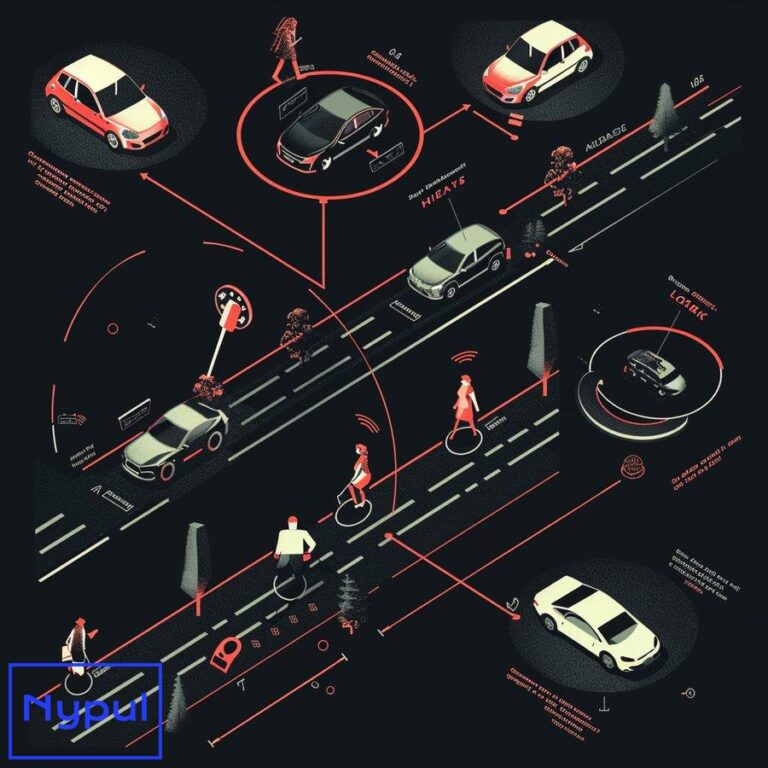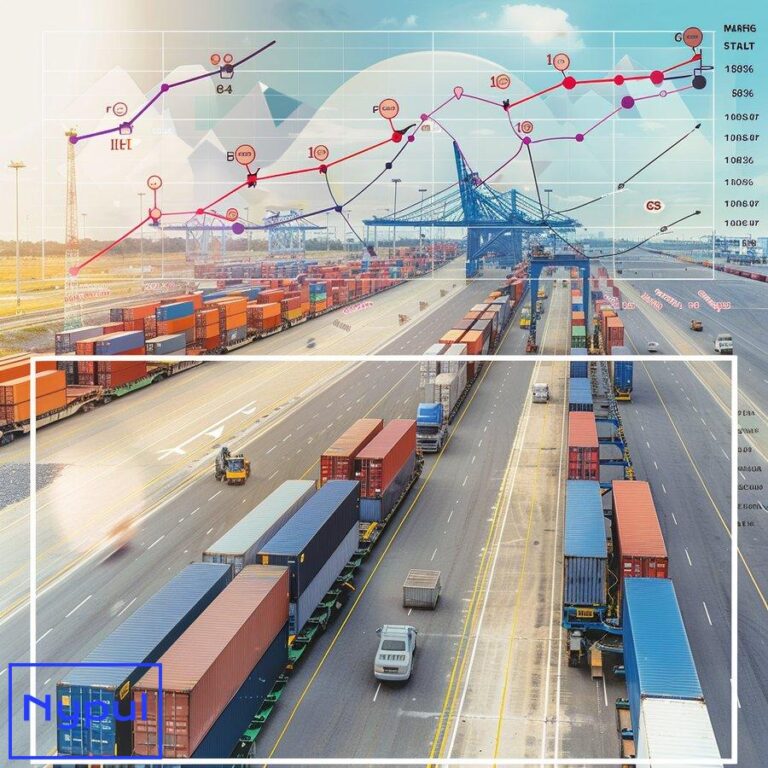How Is Drayage Calculated
How do weight and size affect drayage calculations?

Weight and size are fundamental factors in determining drayage costs. Drayage providers use these metrics to assess the resources required for transporting cargo, which directly influences pricing.
Weight considerations
Drayage rates are typically calculated based on the cargo’s weight, measured in hundredweight (CWT) increments. One CWT equals 100 pounds. Most drayage companies round up to the nearest CWT, so a shipment weighing 1,250 pounds would be charged as 13 CWT.
The weight-based pricing structure reflects the increased fuel consumption, wear on equipment, and potential need for specialized handling equipment for heavier loads. Heavier shipments may also require additional labor or equipment, further impacting costs.
Minimum weight thresholds
Many drayage providers implement minimum weight thresholds. For instance, a company might set a 200-pound (2 CWT) minimum. This means even if your shipment weighs only 50 pounds, you’ll be charged for 200 pounds. This practice ensures the provider covers basic operational costs for smaller shipments.
Size and volume considerations
While weight is a primary factor, the physical dimensions of cargo also play a crucial role in drayage calculations. Oversized or bulky items may incur additional charges, even if they’re relatively light. This is because they may:
Require special handling equipment: Awkwardly shaped or extra-large items might need forklifts or cranes for loading and unloading.
Occupy more space: Bulky items that take up significant container or truck space may be charged based on volume rather than weight.
Necessitate specialized transportation: Some oversized items might require flatbed trucks or other non-standard vehicles, increasing costs.
Density factor
The relationship between an item’s weight and its volume, known as density, can impact drayage pricing. Items with low density (light but bulky) might be subject to dimensional weight pricing, where the carrier calculates a theoretical weight based on the item’s dimensions.
Container types and sizes
The type and size of containers used also affect drayage calculations. Standard container sizes include 20-foot, 40-foot, and 45-foot lengths. Larger containers naturally cost more to transport due to increased weight and space requirements. Specialized containers like refrigerated units (reefers) or open-top containers for oversized cargo typically incur higher rates due to their unique handling needs.
Weight distribution
Proper weight distribution within a container is crucial. Unevenly distributed weight can lead to safety issues and potential damage to goods or equipment. Some drayage providers may charge extra for loads requiring redistribution or special handling due to poor weight balance.
Stackability
The ability to stack cargo efficiently impacts drayage costs. Items that can be safely stacked allow for better utilization of container space, potentially reducing the number of trips or containers needed. Non-stackable items may result in higher costs due to inefficient space usage.
Hazardous materials
Shipments containing hazardous materials often incur additional charges due to the specialized handling, documentation, and safety precautions required. The weight and size of these shipments are still factored in, but with premium pricing applied.
Overweight containers
Containers exceeding standard weight limits may incur significant surcharges. These overweight fees compensate for increased fuel consumption, potential equipment strain, and compliance with road weight restrictions. It’s crucial to accurately declare container weights to avoid unexpected fees and potential legal issues.
Understanding how weight and size impact drayage calculations empowers shippers to optimize their cargo packaging and consolidation strategies. By considering these factors, businesses can make informed decisions to potentially reduce drayage costs while ensuring safe and efficient transportation of their goods.
What role does distance play in determining drayage costs?
Distance is a critical factor in drayage cost calculations, significantly impacting the overall pricing structure. While drayage typically involves short-haul transportation, the specific distance between pickup and delivery points can substantially influence the final cost.
Base rate and mileage
Drayage providers often establish a base rate that covers a certain distance, usually within the immediate port or terminal area. Beyond this base distance, additional mileage charges apply. These charges are calculated per mile or kilometer and can vary based on the specific route and region.
Zone-based pricing
Many drayage companies employ a zone-based pricing system. This method divides the service area into concentric zones radiating outward from the port or terminal. Each zone has a predetermined rate, with costs increasing as you move to outer zones. This system simplifies pricing for both providers and customers, offering more predictable costs based on delivery location.
| Zone | Distance from Port | Rate per Container |
|---|---|---|
| 1 | 0-10 miles | $250 |
| 2 | 11-25 miles | $350 |
| 3 | 26-50 miles | $450 |
| 4 | 51-75 miles | $550 |
| 5 | 76-100 miles | $650 |
Route complexity
The complexity of the route between pickup and delivery points can impact drayage costs beyond simple mileage. Factors that may increase costs include:
Traffic congestion: Routes through heavily congested urban areas may incur higher rates due to increased time and fuel consumption.
Toll roads: Drayage providers may pass on toll costs to customers, especially for routes that frequently use toll roads or bridges.
Restricted access areas: Deliveries to locations with limited access or special entry requirements (e.g., city centers with time restrictions) may result in additional charges.
Terrain: Routes involving challenging terrain, such as mountainous areas or unpaved roads, may lead to higher rates due to increased fuel consumption and potential wear on equipment.
Multi-stop drayage
For shipments requiring multiple stops, distance plays an even more significant role. Each additional stop increases the total mileage and time required, resulting in higher overall costs. Drayage providers typically charge for the total distance covered, including travel between stops.
Fuel surcharges
While not directly tied to distance, fuel surcharges are often calculated as a percentage of the base transportation cost. As such, longer distances indirectly lead to higher fuel surcharges. These surcharges fluctuate with fuel prices, adding a variable component to distance-based pricing.
Empty container returns
The distance to return empty containers to the port or depot after delivery can impact drayage costs. Some providers include this return trip in their initial pricing, while others may charge separately. The distance for the return journey can significantly affect the overall cost, especially for deliveries far from the port.
Intermodal considerations
For drayage that connects with other transportation modes (e.g., rail or air), the distance to intermodal facilities becomes crucial. Providers may charge different rates for drayage to rail yards or airports compared to direct deliveries to warehouses or distribution centers.
Time-distance relationship
Distance directly impacts the time required for drayage operations. Longer distances not only increase fuel and mileage costs but also affect driver hours, potentially incurring overtime charges or requiring multiple drivers for longer hauls.
Seasonal and peak period adjustments
During peak shipping seasons or periods of high demand, drayage providers may adjust their distance-based pricing. This could involve implementing surge pricing for certain routes or temporarily expanding zone boundaries to manage capacity.
Geographic specifics
The impact of distance on drayage costs can vary significantly between different geographic regions:
Urban vs. rural: Drayage in densely populated urban areas might have higher per-mile rates due to congestion and complex navigation, even for shorter distances.
Port proximity: Areas closer to major ports might have more competitive drayage rates due to higher competition and more efficient operations.
Regional economic factors: Economic conditions in different regions can influence labor costs and operational expenses, affecting how distance impacts overall drayage pricing.
Understanding the role of distance in drayage calculations allows shippers to make strategic decisions about inventory placement, distribution center locations, and routing options. By optimizing for distance, businesses can potentially reduce their drayage costs while maintaining efficient supply chain operations.
How are base rates determined in drayage pricing?
Base rates form the foundation of drayage pricing structures, serving as the starting point for cost calculations. Understanding how these rates are determined is crucial for businesses seeking to manage their logistics expenses effectively.
![]()
Components of base rates
Drayage base rates typically encompass several core elements:
Labor costs: This includes wages for drivers, dock workers, and administrative staff involved in drayage operations.
Equipment expenses: Costs associated with trucks, chassis, and other necessary equipment for container movement.
Fuel: A portion of anticipated fuel costs is often built into the base rate, with additional fluctuations covered by separate fuel surcharges.
Insurance: Coverage for potential damages or losses during transport.
Operational overhead: General business expenses such as facility costs, utilities, and administrative overhead.
Market factors influencing base rates
Several market-driven factors play a role in determining drayage base rates:
Supply and demand: During peak shipping seasons or in high-volume ports, base rates may increase due to heightened demand for drayage services.
Local economic conditions: Labor costs, real estate prices, and overall economic health in a specific region can impact base rates.
Competition: The number of drayage providers in an area can influence pricing, with more competitive markets potentially leading to lower base rates.
Regulatory environment: Changes in regulations, such as emissions standards or driver hour restrictions, can affect operational costs and, consequently, base rates.
Port-specific considerations
Different ports may have varying base rate structures due to unique characteristics:
Port efficiency: Ports with more efficient operations may allow for lower base rates due to quicker turnaround times.
Port fees: Some ports charge additional fees that drayage providers may incorporate into their base rates.
Congestion levels: Ports prone to congestion might see higher base rates to account for potential delays and increased operational costs.
Container types and sizes
Base rates often vary depending on the type and size of containers being transported:
| Container Type | Base Rate (Example) |
|---|---|
| 20′ Dry | $250 |
| 40′ Dry | $300 |
| 40′ High Cube | $325 |
| 20′ Reefer | $350 |
| 40′ Reefer | $400 |
Specialized containers like reefers (refrigerated units) or open-top containers typically have higher base rates due to additional equipment and handling requirements.
Weight considerations in base rates
While weight-based charges are often separate, some providers incorporate weight thresholds into their base rates:
Minimum weight: Many drayage companies set a minimum weight (e.g., 200 lbs or 2 CWT) for their base rate, charging this amount even for lighter shipments.
Weight brackets: Some providers structure their base rates with different tiers for various weight ranges, offering slight discounts for heavier shipments within the base rate.
Distance factors
Although distance-based charges are typically separate, base rates may include:
Free miles: A set number of miles included in the base rate before additional mileage charges apply.
Zone-based structure: Some providers incorporate basic zoning into their base rates, with different rates for immediate port areas versus slightly more distant locations.
Time-based elements
Base rates often account for standard operational times:
Free time: A set period for loading or unloading included in the base rate, beyond which detention charges may apply.
Standard business hours: Base rates typically cover operations during regular business hours, with premium rates for after-hours services.
Volume and contract considerations
For high-volume shippers or those with long-term contracts, base rates may be adjusted:
Volume discounts: Shippers moving large numbers of containers may negotiate lower base rates.
Contract rates: Long-term agreements often come with more favorable base rates in exchange for guaranteed business.
Seasonal adjustments: Some providers may have different base rates for peak and off-peak seasons.
Equipment positioning
The availability and positioning of equipment can influence base rates:
Balanced markets: Areas with a good balance of inbound and outbound containers may have lower base rates due to reduced repositioning costs.
Equipment shortages: Regions experiencing chassis or container shortages might see higher base rates to offset repositioning expenses.
Additional services in base rates
Some drayage providers include basic additional services in their base rates:
Simple customs clearance: Basic customs processing might be included, with more complex cases incurring additional fees.
Standard documentation: Preparation of basic shipping documents may be part of the base rate.
Chassis provision: Some base rates include the cost of chassis rental, while others charge this separately.
Understanding these factors that determine drayage base rates allows shippers to better negotiate and budget for their transportation needs. By considering these elements, businesses can make informed decisions about their drayage providers and potentially identify areas for cost optimization in their supply chain operations.
What additional fees and surcharges should you expect in drayage?
While base rates form the foundation of drayage pricing, a variety of additional fees and surcharges can significantly impact the final cost. Understanding these potential extras is crucial for accurate budgeting and avoiding unexpected expenses in your logistics operations.
Fuel surcharges
Fuel surcharges are among the most common additional fees in drayage:
Calculation methods: Typically calculated as a percentage of the base transportation cost or as a flat fee per mile.
Variability: These surcharges fluctuate with fuel prices, often adjusted weekly or monthly.
Transparency: Reputable drayage providers clearly outline their fuel surcharge calculation methods and current rates.
Detention and demurrage charges
These time-based fees can quickly accumulate if not managed properly:
Detention (per diem): Charged when a container or chassis is held beyond the allotted free time at a warehouse or other facility.
Demurrage: Fees incurred when a container remains at the port or terminal beyond the allowed free time.
Rates: Can range from $50 to over $300 per day, depending on the location and equipment type.
Chassis split fees
Incurred when a chassis is not available at the container pickup location:
Additional mileage: Compensates for the extra distance traveled to obtain a chassis.
Time factor: Accounts for the additional time required to secure the necessary equipment.
Typical range: Often between $50 to $150 per occurrence.
Pre-pull or yard storage fees
Charged when containers are pulled from the terminal before the scheduled delivery date:
Storage costs: Cover the expense of temporarily storing the container.
Handling fees: Account for additional moves required to stage the container.
Benefit: Can help avoid demurrage charges at the port but incur their own costs.
Special handling charges
Applied to shipments requiring extra attention or equipment:
Overweight containers: Fees for containers exceeding standard weight limits.
Out-of-gauge cargo: Charges for oversized or irregularly shaped items.
Hazardous materials: Additional fees for handling dangerous goods.
Rates: Can vary widely based on the specific requirements, often ranging from $100 to several thousand dollars per container.
Stop-off charges
Applicable when a container requires multiple delivery points:
Per-stop fee: A flat rate charged for each additional stop beyond the primary destination.
Mileage charges: Additional per-mile fees for the extra distance traveled.
Time considerations: May include charges for additional time required for multiple stops.
Congestion or peak season surcharges
Implemented during high-traffic periods or seasons:
Port congestion fees: Applied when port delays increase operational costs.
Peak season surcharges: Higher rates during busy shipping periods, typically late summer through fall.
Variability: Can range from a few dollars to over $1,000 per container, depending on severity and location.
Equipment imbalance fees
Charged in markets with uneven inbound and outbound container flows:
Repositioning costs: Cover expenses for moving empty containers to areas of need.
Market-specific: Rates vary based on local supply and demand for containers and chassis.
Documentation and customs fees
Related to paperwork and regulatory compliance:
Customs exams: Charges for random customs inspections or documentation reviews.
Additional documentation: Fees for preparing or processing specialized paperwork.
Rates: Can range from nominal amounts for basic services to several hundred dollars for complex cases.
After-hours or weekend service charges
Premium rates for operations outside standard business hours:
Overtime labor costs: Reflect higher wages for off-hours work.
Facility access fees: Charges for accessing terminals or warehouses during non-standard hours.
Typical range: Often 1.5 to 2 times the standard rate.
Scale fees
Charges for weighing containers:
SOLAS compliance: Fees for obtaining verified gross mass (VGM) certificates.
Overweight checks: Charges for weighing potentially overloaded containers.
Rates: Usually a flat fee per weighing, ranging from $25 to $100.
Attempted pickup or delivery feesCharged when a pickup or delivery cannot be completed as scheduled:
Driver time: Compensates for the time and resources expended in the failed attempt.
Rescheduling fees: May include charges for reorganizing the delivery or pickup.
Typical range: Often $50 to $150 per occurrence.
Accessorial charges
Cover a range of additional services or special requirements:
Lumper fees: Charges for loading or unloading assistance.
Inside delivery: Fees for bringing goods inside a facility rather than dock delivery.
Special equipment: Charges for using forklifts, pallet jacks, or other specialized gear.
Rates: Vary widely based on the specific service, from $50 to several hundred dollars.
Tolls and permits
Passed on to the customer when applicable:
Road tolls: Charges for using toll roads or bridges.
Overweight permits: Fees for obtaining permits to transport overweight containers.
Rates: Directly reflect the actual costs incurred, plus potential administrative fees.
Understanding these additional fees and surcharges is essential for accurate drayage cost estimation and budgeting. By anticipating these potential extras, shippers can better manage their logistics expenses and avoid unexpected costs in their supply chain operations.
How does timing impact drayage calculations?

Timing plays a crucial role in drayage calculations, influencing both operational efficiency and cost. Understanding the temporal aspects of drayage can help businesses optimize their logistics strategies and potentially reduce expenses.
Port free time and demurrage
The clock starts ticking as soon as a container is unloaded from a vessel:
Free time: Ports typically offer a set number of days (often 3-5) during which containers can be stored without charge.
Demurrage fees: Once free time expires, daily demurrage charges apply, often escalating over time.
Cost impact: Efficient container pickup within the free time window can significantly reduce overall drayage costs.
Terminal operating hours
The timing of container pickups and deliveries relative to terminal hours affects drayage operations:
Standard hours: Most terminals have set operating hours, often with early morning to early evening availability.
Off-peak incentives: Some ports offer reduced fees for pickups during less busy hours to alleviate congestion.
Extended gates: During peak seasons, terminals may offer extended hours, potentially at premium rates.
Appointment systems
Many terminals now require scheduled appointments for container pickups:
Slot availability: Limited appointment slots can impact drayage timing and efficiency.
Missed appointments: Failing to arrive at the scheduled time can result in fees and operational delays.
Planning importance: Effective use of appointment systems can reduce wait times and improve overall drayage efficiency.
Delivery window requirements
Consignees often specify particular time frames for deliveries:
Narrow windows: Tight delivery schedules can increase drayage costs due to the need for precise timing.
Flexibility benefits: Wider delivery windows allow for more efficient route planning and potentially lower costs.
After-hours deliveries: Requests for deliveries outside standard business hours typically incur premium charges.
Seasonal considerations
Drayage timing and costs can vary significantly based on the time of year:
Peak season surcharges: Many providers implement higher rates during busy periods, typically late summer through fall.
Holiday impacts: Reduced operating hours or closures around holidays can affect drayage schedules and costs.
Weather-related delays: Seasonal weather patterns can impact timing and potentially incur additional fees.
Detention charges
Time spent loading or unloading beyond the allotted free time results in detention fees:
Free time: Typically 1-2 hours for loading or unloading, varying by provider and location.
Hourly rates: Detention charges are usually applied on an hourly basis after free time expires.
Cost implications: Efficient loading and unloading processes can significantly reduce overall drayage expenses.
Chassis availability
The timing of chassis availability can impact drayage operations:
Split moves: When chassis aren’t available at the container pickup location, additional time and fees are incurred.
Peak period shortages: Chassis scarcity during busy times can lead to delays and increased costs.
Advance planning: Reserving chassis ahead of time can improve timing efficiency and potentially reduce costs.
Customs clearance timing
The speed of customs processes can significantly impact drayage timing:
Pre-clearance benefits: Containers cleared before vessel arrival can be picked up more quickly, reducing potential demurrage.
Examination delays: Random customs exams can extend drayage timelines and potentially incur additional costs.
Documentation readiness: Having all necessary paperwork prepared in advance can expedite clearance and improve timing.
Intermodal connections
For drayage operations connecting with rail or air transport, timing is critical:
Cut-off times: Missing intermodal transfer deadlines can result in significant delays and additional costs.
Buffer planning: Building in time buffers for potential delays can help ensure smooth intermodal transitions.
Coordination importance: Effective communication between drayage providers and other transport modes is essential for timing efficiency.
Traffic and congestion considerations
Urban traffic patterns significantly impact drayage timing:
Rush hour avoidance: Planning pickups and deliveries outside peak traffic hours can improve efficiency.
Real-time adjustments: Using traffic monitoring systems to make dynamic routing decisions can optimize timing.
Congestion surcharges: Some providers implement additional fees for deliveries in heavily congested areas or during peak traffic times.
Equipment turn times
The efficiency of container and chassis returns impacts overall drayage timing:
Quick-turn incentives: Some terminals offer benefits for rapid equipment returns, encouraging faster drayage cycles.
Per diem charges: Delays in returning equipment can result in daily fees, increasing overall costs.
Dual transactions: Combining container drop-offs with pickups can improve timing efficiency and potentially reduce costs.
By carefully considering these timing factors, businesses can optimize their drayage operations for both efficiency and cost-effectiveness. Proactive planning, flexible scheduling, and effective communication with drayage providers and terminals are key to managing the temporal aspects of drayage and minimizing related expenses.
What tools can help you estimate drayage costs?
Accurate drayage cost estimation is crucial for effective logistics planning and budgeting. Fortunately, various tools and resources are available to help businesses calculate and forecast their drayage expenses. Here’s an overview of the most useful tools for estimating drayage costs:
Online drayage calculators
Many drayage providers and logistics companies offer web-based calculators:
Input parameters: Typically include origin, destination, container type, and weight.
Instant estimates: Provide quick, ballpark figures for basic drayage moves.
Limitations: May not account for all potential fees or special circumstances.
Transportation management systems (TMS)
Comprehensive software solutions for managing logistics operations:
Rate comparison: Allow users to compare rates from multiple drayage providers.
Historical data analysis: Use past shipment data to improve future cost estimates.
Integration capabilities: Often connect with other supply chain systems for more accurate overall cost projections.
Freight rate APIs
Application Programming Interfaces that provide real-time drayage rate information:
Direct integration: Can be incorporated into existing business systems or websites.
Up-to-date pricing: Offer current rates, including any surcharges or special fees.
Customization options: Many APIs allow for tailored queries based on specific shipment details.
Spreadsheet-based tools
Custom or template spreadsheets for detailed drayage cost calculations:
Flexibility: Can be tailored to include company-specific factors and pricing structures.
Scenario planning: Allow for easy adjustment of variables to compare different drayage options.
Cost breakdown: Provide detailed itemization of various drayage cost components.
Mobile apps
Smartphone applications designed for on-the-go drayage cost estimation:
Convenience: Offer quick estimates from any location.
GPS integration: Some apps use current location data to provide more accurate local rates.
Provider-specific apps: Many drayage companies offer their own apps with tailored pricing information.
Port authority websites
Official port websites often provide tools and information for drayage cost estimation:
Fee schedules: Detailed breakdowns of port-specific charges and fees.
Congestion updates: Real-time information on port conditions that may affect drayage costs.
Calculator tools: Some ports offer their own drayage cost estimation tools.
Industry association resources
Organizations like the Intermodal Association of North America (IANA) provide valuable tools:
Market trend reports: Offer insights into drayage pricing trends and forecasts.
Benchmarking data: Provide industry averages for various drayage cost components.
Educational resources: Offer guidance on understanding and calculating drayage costs.
Drayage broker platforms
Online marketplaces connecting shippers with drayage providers:
Competitive quotes: Allow users to receive and compare quotes from multiple providers.
Transparency: Often provide detailed breakdowns of all fees and charges.
User reviews: Offer insights into provider reliability and potential hidden costs.
AI-powered prediction tools
Advanced systems using artificial intelligence to forecast drayage costs:
Pattern recognition: Analyze vast amounts of historical data to identify pricing trends.
Dynamic pricing models: Account for real-time factors like fuel prices, port congestion, and capacity.
Continuous learning: Improve accuracy over time as more data is processed.
GIS-based mapping tools
Geographic Information System tools for visualizing and calculating drayage routes:
Accurate distance calculation: Provide precise mileage estimates for drayage moves.
Zone identification: Help determine applicable zone-based pricing for different locations.
Route optimization: Suggest efficient routes that can potentially reduce drayage costs.
Custom ERP modules
Enterprise Resource Planning systems with specialized drayage cost estimation features:
Integration with business data: Incorporate company-specific pricing agreements and volume discounts.
Comprehensive cost allocation: Distribute drayage costs across different business units or product lines.
Forecasting capabilities: Use historical data and future projections to estimate long-term drayage expenses.
When using these tools for drayage cost estimation, consider the following best practices:
Data accuracy: Ensure all input information is as precise and up-to-date as possible.
Multiple tool comparison: Use a combination of tools to cross-verify estimates and gain a comprehensive view.
Regular updates: Keep estimation tools current with the latest pricing information and market conditions.
Customization: Tailor tools to reflect your specific business needs and drayage patterns.
Expert consultation: Combine tool-based estimates with insights from experienced logistics professionals.
By leveraging these various tools and approaches, businesses can develop more accurate drayage cost estimates, leading to better budgeting, improved negotiation positions with providers, and more efficient overall logistics planning.
How can you interpret and verify your drayage bill?

Accurately interpreting and verifying drayage bills is crucial for managing logistics costs and ensuring fair pricing. This process requires attention to detail and a good understanding of drayage pricing components. Here’s a comprehensive guide to help you navigate this important task:
Understanding bill components
A typical drayage bill consists of several key elements:
Base rate: The fundamental charge for the drayage service.
Fuel surcharge: An additional fee to account for fluctuating fuel prices.
Accessorial charges: Fees for additional services or special handling requirements.
Taxes and fees: Any applicable government or regulatory charges.
Itemized breakdown
Ensure your drayage bill provides a detailed itemization:
Line-by-line charges: Each fee should be clearly listed with its corresponding amount.
Service descriptions: Look for clear explanations of what each charge represents.
Date and time stamps: Verify that charges align with the actual service dates.
Verifying base rate accuracy
Compare the billed base rate against your agreed-upon pricing:
Contract rates: Check that the rate matches your negotiated contract terms.
Spot pricing: For non-contract moves, verify the rate against the quoted price.
Zone or mileage basis: Confirm that the rate corresponds to the correct distance or zone.
Fuel surcharge calculation
Scrutinize the fuel surcharge for accuracy:
Calculation method: Understand whether it’s a percentage of the base rate or a per-mile charge.
Current fuel prices: Verify that the surcharge reflects current fuel costs in your area.
Agreed caps or limits: Check if any pre-negotiated limits on fuel surcharges have been applied.
Accessorial charges review
Carefully examine all additional fees:
Justification: Ensure each accessorial charge corresponds to a service actually provided.
Rate accuracy: Verify that the charges match your agreed-upon rates for these services.
Frequency: Check for any duplicate charges or unnecessary repetitions.
Common accessorial charges to verify:
Detention fees: Confirm the billed time against your records of how long the container was held.
Per diem charges: Verify the number of days charged for equipment use.
Chassis split fees: Ensure these are only applied when a chassis was actually split from the container.
Overweight charges: Check that these align with the actual weight of your shipment.
Special handling fees: Confirm that any charges for special equipment or procedures were necessary.
Time and date verification
Cross-reference the bill with your shipment timeline:
Pickup and delivery times: Ensure these match your records and any signed delivery receipts.
Free time usage: Verify that any time-based charges (like detention) account for your allotted free time.
Weekend and holiday rates: Confirm that higher rates for off-hours services were only applied when applicable.
Mileage and routing checks
Verify the distance-based aspects of your bill:
Total mileage: Use mapping tools to confirm the charged distance is accurate.
Route-specific charges: Ensure any tolls or special route fees correspond to the actual path taken.
Zone-based pricing: If applicable, verify that the correct zone was applied based on the delivery location.
Volume and weight accuracy
Confirm that the billed weight and volume match your shipment:
Weight verification: Cross-check against your bill of lading or weight tickets.
Dimensional weight: For bulky items, ensure any dimensional weight calculations are correct.
Container type: Verify that the charges correspond to the actual container size and type used.
Port and terminal fees
For port drayage, carefully review related charges:
Demurrage: Verify the number of days charged against the actual time the container spent at the port.
Terminal handling charges: Ensure these align with the published rates of the specific terminal.
Customs examination fees: Confirm that any charges for customs inspections actually occurred.
Documentation and administrative fees
Check the accuracy of paperwork-related charges:
Processing fees: Ensure these align with your agreed-upon rates for documentation handling.
Customs brokerage: If included, verify that these charges match the services provided.
Additional paperwork: Confirm any charges for special documentation or certificates were necessary.
Comparing against quotes and estimates
Reconcile your final bill with any pre-service estimates:
Variance analysis: Identify and investigate any significant differences between estimated and actual costs.
Additional services: Verify that any services not included in the original quote were actually necessary and authorized.
Contract compliance check
For ongoing drayage relationships, ensure billing adheres to your contract terms:
Rate consistency: Verify that the applied rates match those specified in your contract.
Volume discounts: Ensure any applicable volume-based discounts have been applied correctly.
Service level agreements: Check that any performance-based pricing adjustments are correctly reflected.
Historical comparison
Compare the current bill against previous invoices for similar shipments:
Trend analysis: Look for any unusual spikes or changes in specific charge categories.
Seasonal adjustments: Verify that any seasonal rate changes have been applied correctly.
Continuous improvement: Use historical data to negotiate better rates or identify areas for cost reduction.
By systematically reviewing these aspects of your drayage bill, you can ensure accuracy, identify potential errors, and maintain control over your logistics costs. Regular, thorough bill verification not only helps in managing current expenses but also provides valuable insights for future drayage planning and negotiations.






